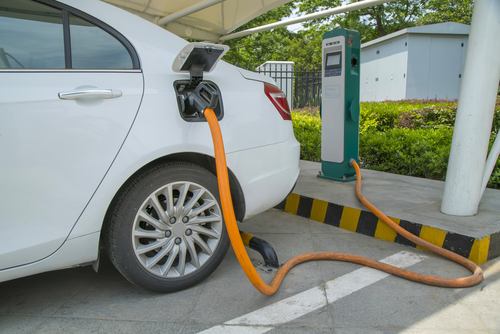Pacific Northwest National Laboratory study examines smart charging strategies for electric vehicles

A mix of planning and overarching electric vehicle strategies could help American cities and utilities alike to prepare for and avoid some of the heaviest costs of what a Pacific Northwest National Laboratory (PNNL) study labels an inevitability: an influx of electric vehicles.
Grid reliability demands a plan, as the next decade will come to be swarmed with EVs of all sizes plugging into charging stations at home, at work and along transportation routes. Already, EV Hub reports about 1.5 million EVs are on the road in the U.S. PNNL noted that the overall power system could handle about 24 million EVs through 2028, but that once things hit a tipping point of around 30 million EVs, the situation would deteriorate. For localities, things could crumble even sooner.
“While we don’t know exactly when the tipping point will happen, fleets of fast-charging vehicles are going to change how cities and utilities manage their electricity infrastructure” Michael Kintner-Meyer, electrical systems engineer in PNNL’s Electricity Infrastructure group and the study’s lead author, said. “It’s not a question of if, but when.”
For their analysis, researchers considered factors other studies have not, including electric delivery and hauler trucks and smart EV charging strategies. They drew their grid capacity data from the Western Electricity Coordinating Council. What they determined was that grid planning doesn’t factor in a mass influx of EVs, meaning that one day a duck curve could emerge that drives up electricity costs and sends voltage plummeting.
A duck curve is a 24 hour load on the power system wherein mornings see moderate loads, days experience low loads and high loads hit at night when people get home from work. Traditionally, this is seen in heavy solar areas, but such severe swings could follow EVs, too, if areas don’t follow charging strategies that call for avoiding charging during peak hours in the morning and early evening. Fast-charging EVs can pull as much from the grid as up to 50 homes, perhaps furthering the danger.
In a series of scenarios, researchers found that bottlenecks would appear most in areas of California, owing to the growth of fast-charging cars and commercial fleets of electric trucks.
“Some cities are already looking into intelligent controls and other ways to modify their distribution systems and operations,” Dennis Stiles, who oversees PNNL’s energy efficiency and renewable energy research portfolio, said. “The key is to figure out now how to avoid large capital outlays in the future. Adding a new transformer here and there is a lot different than a substation overhaul.”
PNNL researchers intend to conduct a follow-up study examining ways to integrate EVs into local and regional power distribution systems.
